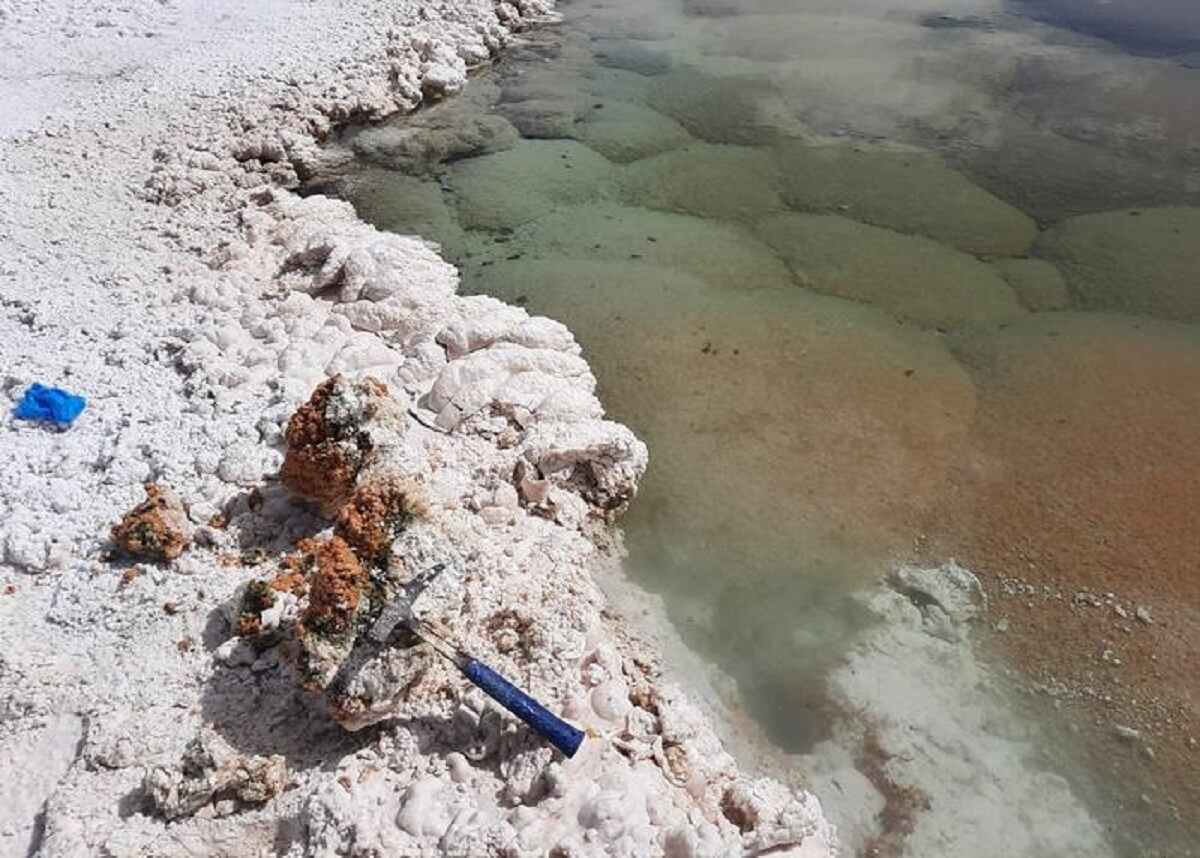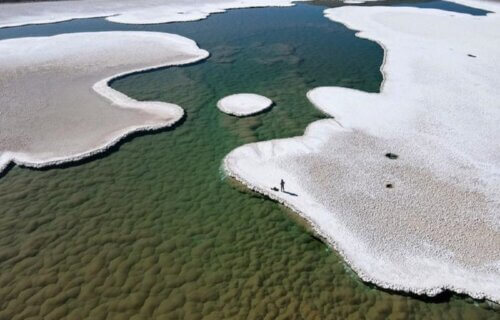BOULDER, Colo. — A unique ecosystem has been discovered in one of the harshest places in the world — and it’s offering up a glimpse into the earliest stages of life on Earth and possibly on ancient Mars.
The previously unknown environment in Argentina’s Puna de Atacama, a high plateau desert more than 3,500 meters (~11,483 feet) above sea level was discovered by geologist Brian Hynek. In the desert’s lagoon system, the professor found stromatolites – complex microbial communities that create large rock mounds, akin to the way corals construct reefs. These stromatolites may mirror those from the early Archaean era, a time when oxygen was virtually absent in Earth’s atmosphere.
“This lagoon could be one of the best modern examples of the earliest signs of life on Earth,” says Professor Hynek from the University of Colorado Boulder, in a media release. “It’s unlike anything I’ve ever seen or, really, like anything any scientist has ever seen. Finding the environment was the biggest eureka moment I’ve ever had in my life. It’s just amazing that you can still find undocumented things like that on our planet.”
The researchers see implications for understanding life on ancient Mars in their findings.
“The fact that the stromatolites formed in this harsh environment suggests that the desert could resemble the conditions on ancient Earth,” Professor Hynek elaborates. “The waters are salty and acidic and, because of the high elevation, are exposed to severe levels of solar radiation. If life ever evolved on Mars to the level of fossils, it would have been like this. Understanding these modern communities on Earth could inform us about what we should look for as we search for similar features in the Martian rocks.”

The researchers recognized that the stromatolites were ancient, rather than modern, based on certain characteristics. While modern stromatolites, like those off the Bahamas coast, are typically small, ancient ones could grow up to six meters. The Atacama lagoons’ stromatolites closely resemble those ancient communities more than any existing ones.
“Their rocky layers were constructed mostly from gypsum, a common mineral in many stromatolite fossils but absent in almost all modern examples of stromatolites,” microbiologist Professor Maria Farías explains. “Biologically, they were made up of an outer layer of photosynthetic microbes called cyanobacteria and a pinkish core rich in archaea—single-celled organisms often found in extreme environments on Earth.”
Returning to the Argentinian lagoons for further research poses challenges. Their first expedition involved a nine-hour drive on a dirt road, staying in a small village reliant on a single spring, and trekking miles in intense heat.
“In some places, we were sinking up to our knees in salt slush,” recalls Prof. Hynek.
Despite the arduous journey, the discovery of a network of 12 lagoons with vibrant green growth in their clear waters affirmed the effort’s value. However, time is of the essence for further exploration. A foreign company has leased the area for lithium mining, threatening the lagoons’ unique ecosystem.
“This entire, unique ecosystem could be gone in a matter of years,” Prof. Hynek warns. “We’re hoping that we can protect some of these sites, or at least detail what’s there before it’s gone or disturbed forever.”
The findings were presented at the 2023 meeting of the American Geophysical Union in San Francisco.
South West News Service writer Imogen Howse contributed to this report.

Why not? Everything else seems to.